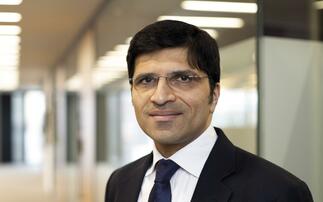
It is widely agreed that, for some schemes, it can be highly beneficial to appoint senior staff from the sponsoring employer to the trustee board.
Such individuals can bring a range of skills, offer invaluable insight into the employer's operations and facilitate a communication fast-track into its leadership.
As schemes mature and their membership includes fewer current employees, maintaining a close connection with the sponsor can get trickier. However, it is a time at which trustees might really need to call on a strong relationship with their sponsor to formulate, and successfully implement, a journey plan to secure benefits outside of the scheme and wind up. So it could be the perfect time to bring a member of senior staff on to the trustee board.
However, as The Pensions Regulator warns, conflicts are "inherently likely to arise" when appointing such individuals as trustees. It is therefore vital that any senior staff taking on a trustee role, their fellow trustees and their business colleagues think carefully about how to identify and manage conflicts.
Laying the groundwork in advance
Conflicts should be part of the conversation whenever a new trustee is being selected but it is particularly important if the potential trustee is senior staff. Is it going to be workable in practice? It is also important to remember that, once appointed as a trustee, the individual will take on the full range of trustee responsibilities and duties and be expected to meet the relevant levels of trustee knowledge and understanding across the scheme's functions. If you just want to facilitate a closer dialogue between the trustee and the company, there may be a better way to do this.
Identify the big conflict situations and pick a side
You can't negotiate with yourself. So, when it comes to negotiations between the trustee and the employer, senior staff trustees need to pick a side. It is a good idea to identify the big-ticket scheme activities which are most likely to give rise to a conflict in advance and think about how they would be managed. For example, in valuation discussions, would you be representing the employer or the trustee?
Address the confidential information question head on
As a general principle of trust law, a trustee is obliged to share with their fellow trustees any information they possess which is relevant to trustee business. But senior staff will also have a duty to the business to keep information confidential. This duty conflict needs to be addressed. Trustees may be comfortable to exempt a senior staff trustee from sharing confidential company information with the trustee board provided that they stand down from the relevant trustee discussion. However, any such exemption needs to be properly agreed and documented.
Establish robust conflicts procedures and protocols
Schemes should have procedures for identifying, assessing and managing conflicts. However, these will need to cater for the additional challenges that can come with having a senior member of staff on the board. The scheme rules and/or articles of association of the trustee company may also need updating so everything joins up. There will also be practical points to think about. For example, if a senior staff trustee is excluded from discussions on a specific topic, how will papers and minutes be circulated to ensure they do not have access to information they shouldn't?
Then make sure everyone is familiar with (and following) them
All trustees should undertake training on the scheme's conflict procedures so they know what is expected of them but this is especially important for a senior staff trustee. Who do you tell if you identify a potential conflict or think you may be in possession of confidential information? How do you avoid inadvertently putting them in a position of conflict as a result of declaring your conflict? Key employer personnel also need to be aware of the senior staff trustee's dual role, so they can take steps at their end to help avoid any issues arising. For example, by being clear about whether, when and how information can be shared with the trustee board.
Stay alive to conflicts and think ahead
Like most things, conflicts are far easier to manage in advance. This means always being on the lookout for conflicts and having systems designed to flush them out. Trustees and scheme secretaries should be thinking about conflicts when preparing the scheme's annual business plan, commencing projects and planning meeting agendas. However, as the senior staff trustee will have the best visibility over both trustee and employer business, much of the burden of identifying possible conflicts, particularly with regard to unexpected rather than scheduled or "business as usual" events, may inevitably fall on them.
Always be clear which hat you are wearing
Even with the most robust procedures in place, a senior staff trustee can't get away from the fact that they will have two hats which they will need to switch between. You may be asked to present at a trustee meeting specifically wearing your employer hat. Or, during a trustee discussion, you may be invited to give, or feel it is appropriate to offer, ad hoc comments from the employer perspective. This is a key advantage of having senior staff on the trustee board but you should be clear in what capacity you are speaking so any commentary can be received, and recorded, in the right way.
This might sound like a difficult gauntlet to run. But, with the right preparation and processes, it doesn't have to be. There are many exceptional senior staff trustees out there for whom it has become second nature such that the advantages of having them on the Trustee board significantly outweighs the risks.
Naomi Brown is senior counsel at Sackers






